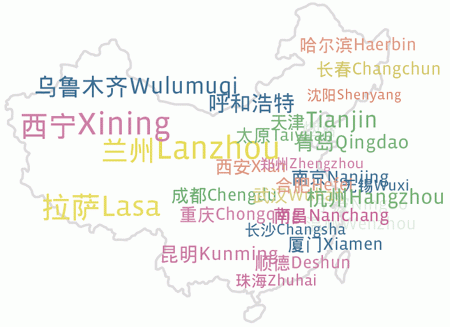

In their strategic pursuit of sustained economic growth and the progressive advancement of western provinces and rural areas, China’s economic policymakers recognize a fundamental shift in consumer dynamics. No longer solely reliant on western and American consumers for the absorption of manufactured goods from the industrial hubs along the Yangtze and Pearl River Deltas, there’s a pressing need for a paradigmatic change. Numerous China experts and market analysts concur that the future trajectory of the Chinese economy hinges on transitioning from a long-standing export-oriented model to a consumer-driven, demand-centric approach.
This evolution anticipates the integration of an additional 400 million consumers into the global economy, reflecting a monumental shift in focus. While comprehending the sheer magnitude of this transformation may appear daunting, industry and sector managers are awakening to the realization that mere numerical awareness is insufficient. Recent years have underscored that China’s consumers defy categorization as a homogeneous entity. Instead, each province within China, akin to the scale of an entire European country, boasts its distinct history, cultural nuances, and occupies diverse stages of economic development. Amid this dynamic landscape, “China’s 2nd Tier Cities” emerge as pivotal players, representing a significant facet of the evolving consumer narrative.

In the coming years, as western companies penetrate further into China, moving beyond the dynamic but developed markets of the 1st tier cities, marketers, strategists, and CEOs will all have to start asking themselves about the characteristics of Chinese consumers in 2nd, 3rd and even 4th tier cities, about the consumers who live in these fairly well-developed areas but have not yet had the chance to become global consumers.
In China, major cities can be divided into tiers based on a number of factors, including population, disposable income, geography, infrastructure, and historical and cultural significance. There is no official government classification of these tiers, but 1st tier cities generally include Shanghai, Beijing, Shenzhen, and Guangzhou, whereas second tier cities include Hangzhou, Tianjin, Chengdu, Nanjing, Dalian or Wuhan.1
Who are these consumer groups? What are their expectations? What is important to them? How large is the market? Regardless of the product category, the answer to these questions and many others will be paramount for both domestic and foreign brands in formulating their China strategies for the next decade.
In this article, we delve into a compelling market research initiative undertaken by Labbrand’s consumer research team, specifically designed to deepen insights into the vibrant landscape of China’s 2nd Tier Cities for a valued client. Throughout the course of this project, our team unearthed invaluable “golden rules” that illuminate the nuances of conducting research in these burgeoning markets. As we navigate through the findings, it becomes evident that the landscape of 2nd and 3rd tier cities in China demands a strategic adaptation of research design and practices. This tailored approach is essential for effectively attaining research objectives and gaining a comprehensive understanding of the unique dynamics shaping consumer behavior in these rapidly evolving urban centers.

During the recent summer expedition, Labbrand’s consumer market research team embarked on a 4-week journey across Zhejiang province, immersing themselves in the diverse landscapes of China’s 2nd Tier Cities. Our exploration included visits to key locales such as the industrial hubs of Yiwu and Shaoshan, the textile-rich region of Tongxiang, and the picturesque area of Xinchang. Through extensive inquiries, keen observations, and a deep dive into the market dynamics of each region, our focus centered on the specific product segment—concrete roof tiles, tailored for the emerging class of homeowners in the Zhejiang countryside.
Recognizing the potential of this burgeoning market, our client sought to navigate the landscape strategically, targeting the 2nd tier regions of Zhejiang province. Faced with resource constraints, they understood the pivotal role of qualitative market research in systematically enhancing their understanding of diverse regions. This undertaking laid the groundwork for the client to formulate a successful market entry strategy, enabling them to connect with the unique needs, expectations, and perceptions of their new target consumers within the dynamic realm of China’s 2nd Tier Cities.
Prior to the fieldwork, the scope was clearly defined and the following information was identified as necessary to come out of the study:
1. A detailed description of how the government organizes the market
2. A profile overview of each area visited (market size estimates, attractiveness of each region)
3. Prioritization principle for business-to-consumer areas and lead generation. (key information that enables understanding of market dynamics and growth potential.)
4. Distributor profiles (distribution channel analysis, price levels, payment terms, product mix, alternative distributor profiles)
5. Detailed description of end-user (purchasing behavior, payment terms, needs, expectations, influencers)
6. Competitor profiles (product types, price levels)
7. Architects profiles and their level of market involvement. (i.e. whether or not architects would identify specific products to be used in construction, and whether their preferences would be followed.)
8. Contractors / Roofers profiles.

The data collection method was in-depth interviews. The organization of the interviews consisted of predefining persons of interest, developing detailed interview guidelines and then actually finding those individuals in the select locations. One aspect that became painfully clear during the fieldwork was that no matter how much the team planned in advance, carrying out successful in-depth interviews depended on two things; actively being in the field from 8am to 8pm (“pounding the pavement” so to speak) and having a local driver who knew his way around and could help make introductions.
The team originally intended to record all of the interviews; however, it was not always easy to accomplish, especially during interviews with government officials. Although it is possible to take notes during an interview, once the research team is back in the office conducting analysis and writing the report it is often helpful to be able to have the interview content on hand to look over as needed. Also, many times the client will require a copy of the interviews for their records.
The fieldwork research design consisted of two phases. The goal of the first phase was to go out and test the interview guidelines to see all the information the client wanted could be obtained within the predetermined timeframe. After reviewing the results from the first phase the team was able to roll-out the fieldwork with the confidence that research objectives would be met.

From our experience, we can summarize a few golden rules for carrying qualitative research in the 2nd tier regions across China:
1. Preparation is key—know the product in question and be able to talk about it.
2. Be flexible and take advantage of opportunities which present themselves.
3. Be prepared to carry out an interview anywhere, get what you can and be thankful.
4. Don’t take everything at face value; be persistent.
5. Go the extra mile; once you leave you can’t go back.
The results of the fieldwork enabled the team to clearly describe the differences and similarities of each region, profile current distributors, end-users, and contractors, to estimate market and segment sizes and to understand through which policies the local and provincial governments are active in this market.
The key output for this project was the development of a roadmap for the client’s marketing and sales teams to assess the attractiveness of a specific market. This included outlining key sources for collecting information and the development of a multi- criteria decision making model which, based on specific variables, enables the client to evaluate the attractiveness of specific regions in comparison to one another. This tool can prioritize specific regions for their sales and marketing teams to review before they enter the area.
In a final strategic modeling workshop, together with the client, Labbrand developed a market development action plan which combined their industry knowledge with our experiences from the fieldwork. This enabled them to clearly outline how a new segment can be identified, what type of promotion material is required, and which type of products can be sold.
From start to finish the project took approximately nine weeks to complete. As is the case with any project which has an intense fieldwork phase, sufficient time is needed to allow for the team to recover. The analysis can only be as good as the data collected; rushing the fieldwork will negatively influence the quality of the final deliverables.

In navigating the intricacies of China’s diverse landscape, characterized by a rich history, cultural tapestry, distinct language, and varied regional disparities, foreign companies eyeing the immense potential of the Chinese domestic market must adopt a nuanced approach. Recognizing the saturation of 1st tier cities like Beijing and Shanghai with an influx of both foreign and domestic brands, savvy businesses are turning their attention to the untapped potential of China’s 2nd Tier Cities and beyond.
To capitalize on the opportunities presented by these burgeoning markets, it is imperative for companies to conduct comprehensive and contextually relevant market research. Understanding the local nuances and economic dynamics of these regions becomes the cornerstone for effective brand strategy, targeted marketing initiatives, and informed expansion decisions. By delving into these 2nd tier cities and beyond before product and service launches, companies position themselves for long-term success, aligning their strategies with the unique needs and preferences of consumers in this emerging frontier of Chinese market development.
1 See RightSite. (2009, May 26). Defining China’s Second and Third Tier Cities. and The Boston Consulting Group (2009, September). China’s Luxury Market in a Post-Land-Rush Era.
A Labbrand Group Company © 2005-2024 Labbrand All rights reserved
沪ICP备17001253号-3* Will be used in accordance with our Privacy Policy
To improve your experience, we use cookies to provide social media features, offer you content that targets your particular interests, and analyse the performance of our advertising campaigns. By clicking on “Accept” you consent to all cookies. You also have the option to click “Reject” to limit the use of certain types of cookies. Please be aware that rejecting cookies may affect your website browsing experience and limit the use of some personalised features.